Centralizing AI development pipelines.
Project
I worked on an AI model development product, which was a product formed from several internal tools created by AI developers at Element AI to streamline internal workflows. The technical back-end was state-of-the-art, but lacked a front-end or cohesive user experience, relying solely on documentation for user guidance.
In particular, I focused on the data labelling tool, which facilitated collaboration between AI practitioners and data labellers during the labelling process. My role was the sole product designer, working with a front- and back-end dev, a product owner, and a UX researcher.
Objective
Starting a simple labelling task involved navigating a fragmented workflow across the command-line, JIRA, Slack, and two separate dashboards. The main goal was to transform the disjointed experience into a cohesive and guided flow.
Work
I conducted in-context observations and desk research on the existing cross-platform task creation process. I paired these with high-level user flows that were the outputs of a design sprint run by my colleagues.
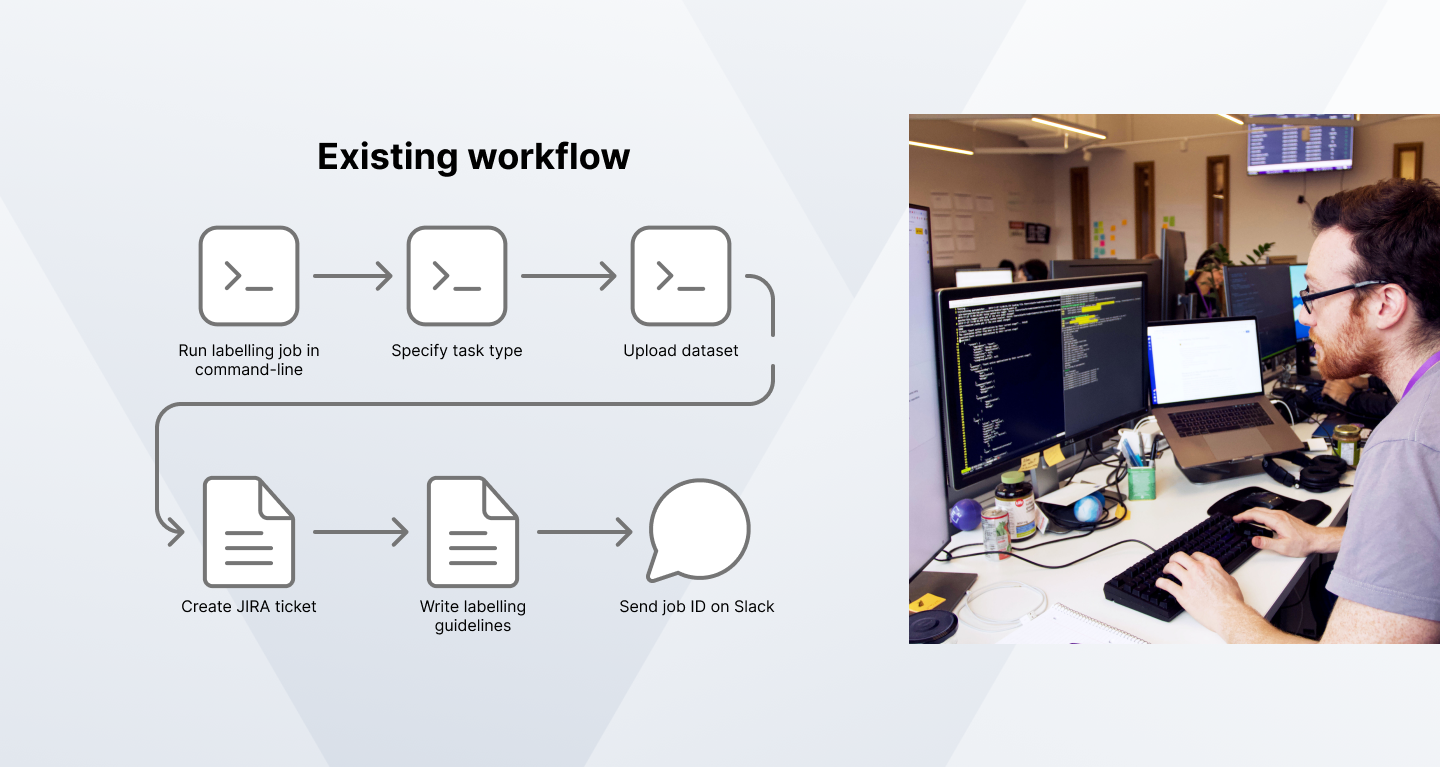
Using these inputs, I delivered revised user flows and rough prototypes of the task creation process. I validated the technical feasibility of the proposed prototypes with the front- and back-end developers.
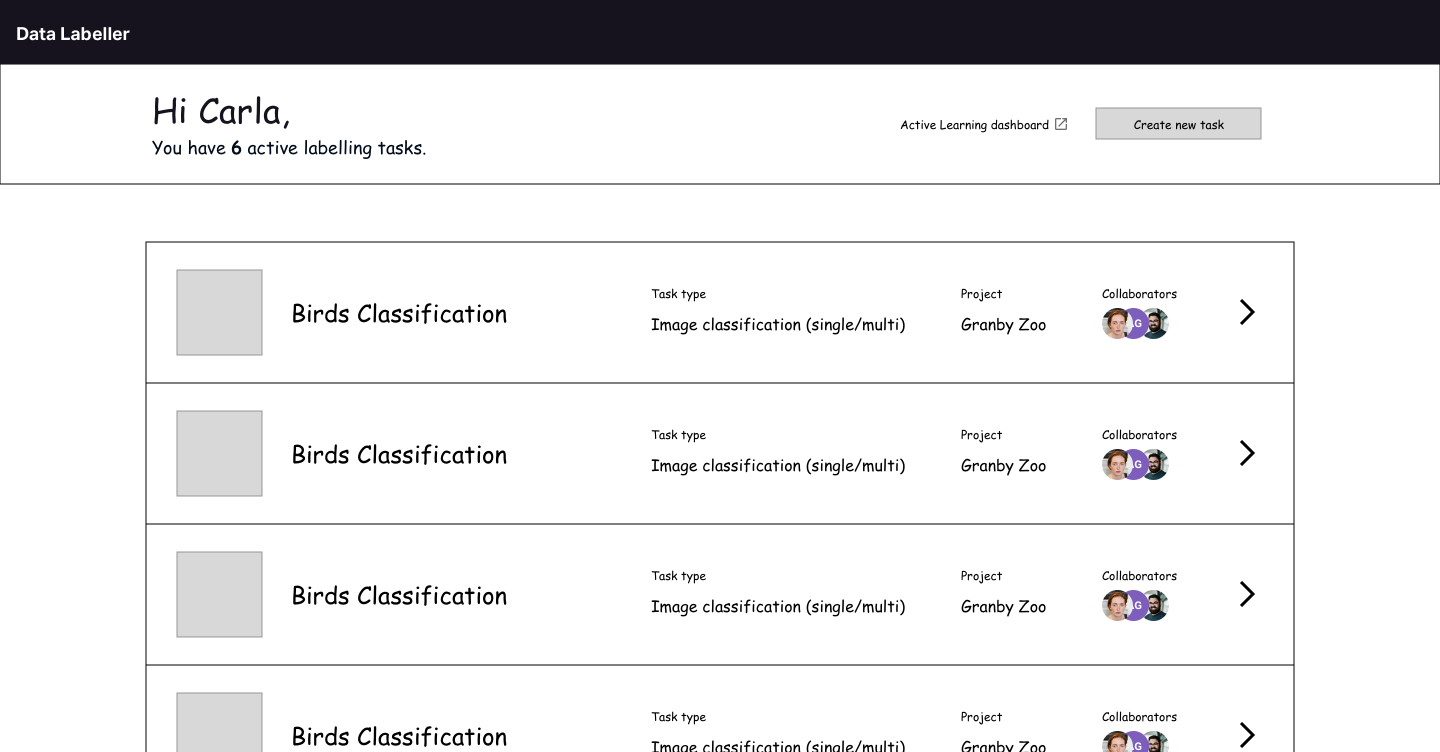
I worked with the product owner and a UX researcher to identify what we wanted to focus on in user interviews, focusing on new concepts and flows that needed user validation.
Based on interview insights, I refined the high-fidelity prototypes, which were then implemented by the developers.
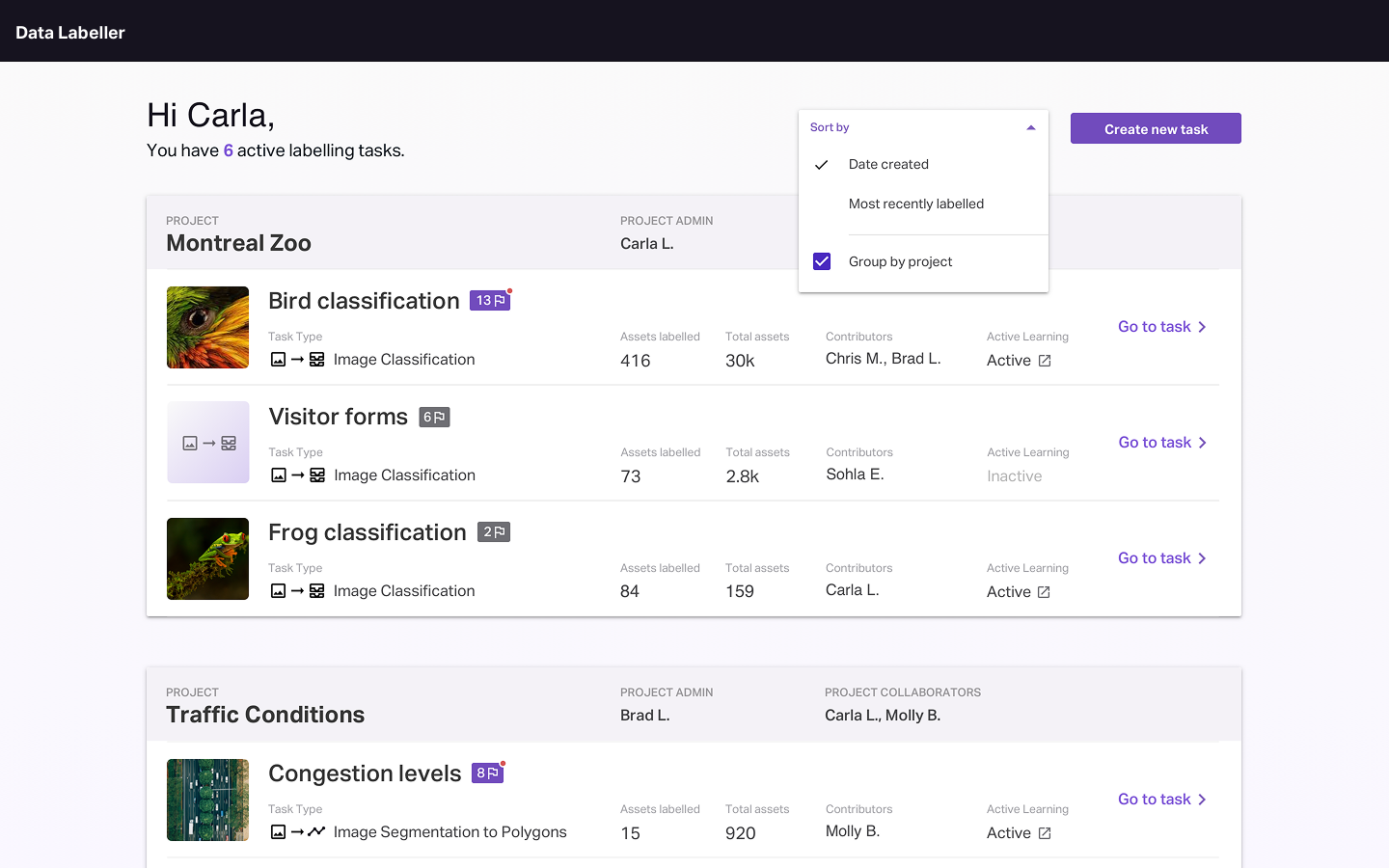
End result
The resulting task creation process was much easier to use and learn, and eliminated the need to jump between platforms just to initiate a task. This also made the product significantly more appealing in sales demos.
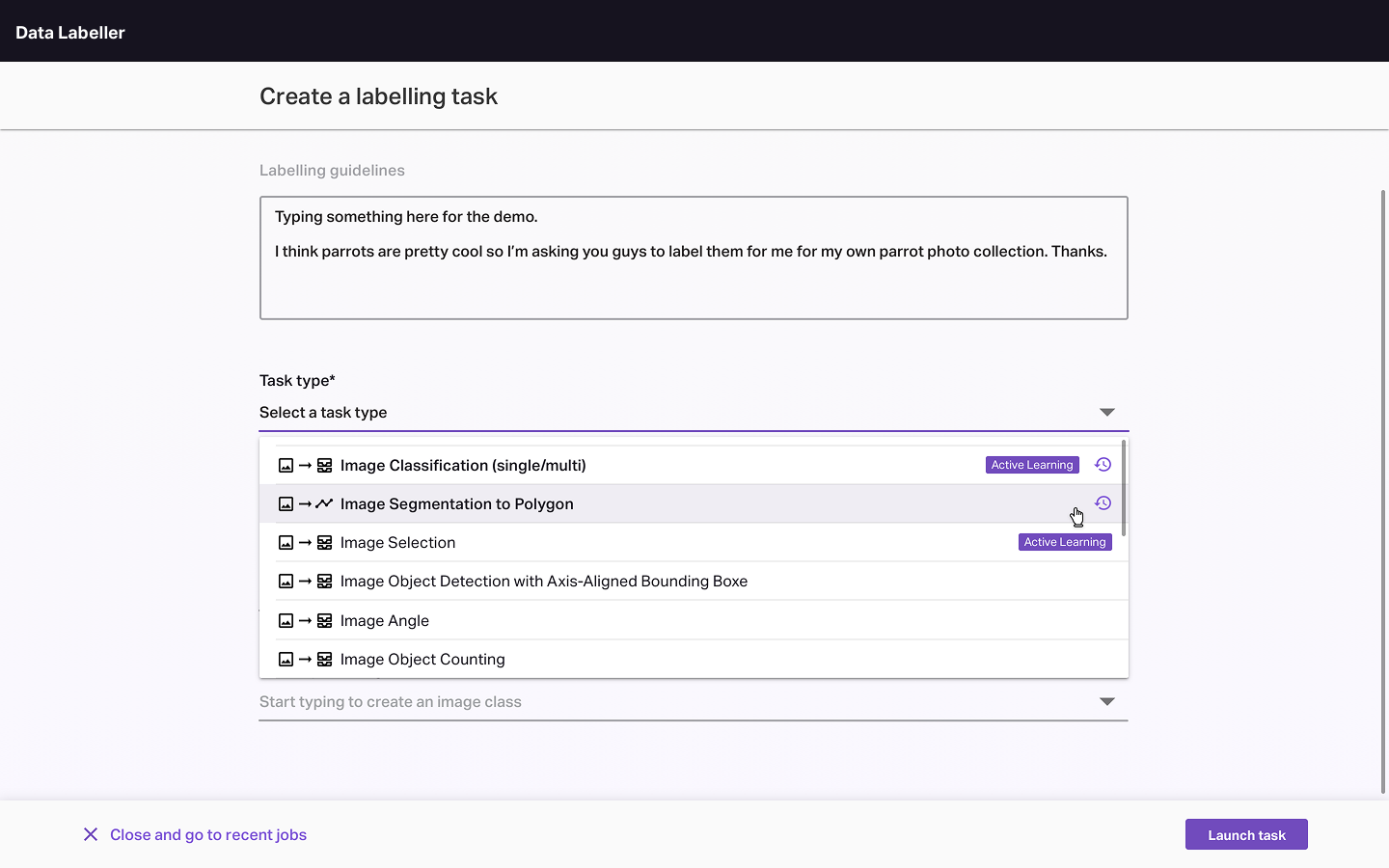
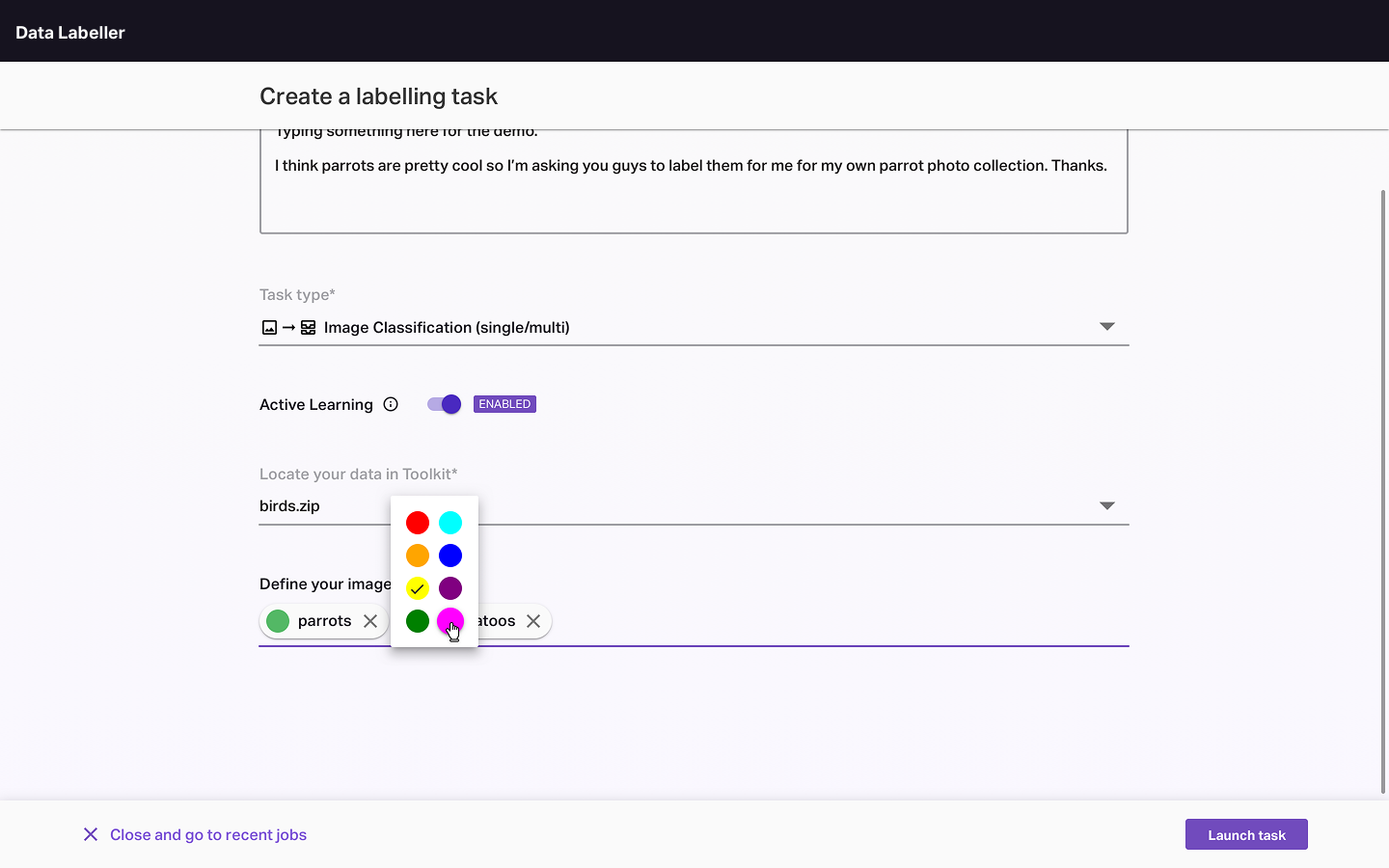
Reflection
During this process, I learned where to build on existing design patterns that had already proven to be effective: for example, AI practitioners frequently needed to attach instructions to their labelling tasks, which often came as a Google Doc. We spent a few iterations trying to flesh out the rich text editing capabilities of our text field before deciding based on testing to simplify it into a field for pasting a Google Doc link, which fit in better with their existing workflow.
I learned to spot and challenge my assumptions about user thinking, and I also learned the value in testing at multiple levels, using both high-fidelity mockups to test usability, and abstract concepts to challenge broader workflow assumptions.